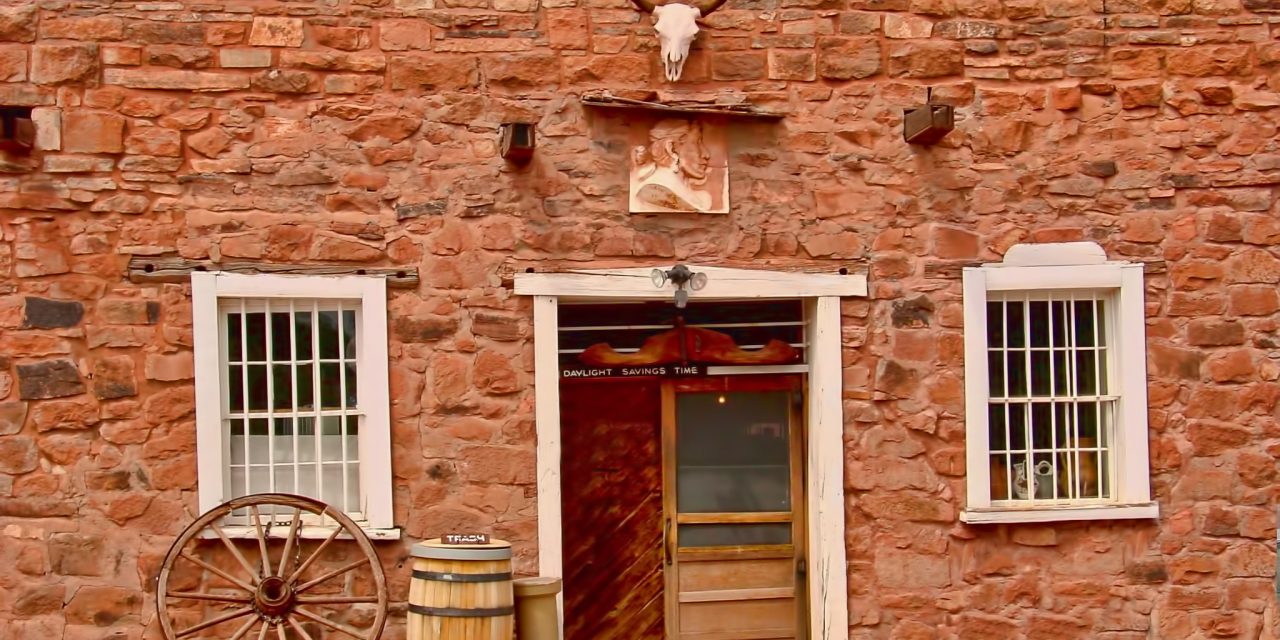
50 Years Ago: Congress declares Hubbell Trading Post a national historic site

Many young people living on the Navajo Reservation today don’t realize that a couple of generations ago, life for Navajo families totally centered on the trading posts in their communities.
The trading posts were their banks. The traders gave them credit so they could buy the things they needed and bought their products including arts and crafts and/or wool, to help pay off these debts.
Traders also served other functions. Some of those were helping their customers understand letters that came in to them, and, on occasion, taking care of their loved ones after they died.
On weekends, Navajo families would travel for miles to shop at the trading posts and would often stay for the entire day so they could meet their friends and other family members, exchange gossip and learn what the people who were governing them were up to.
And no trading post on the reservation was more important that the one built by John Lorenzo Hubbell in Ganado in 1876.
It was so important that in 1967, the U.S. Parks and Recreation jumped at the opportunity to take it over and continue its operation as sort of a museum and a way to show this generation of Navajos and tourists what a real trading post looked like.
But before that happened, in late 1965, Congress stepped in and declared the trading post a national historic site.
This designation, not only put the trading post on the map, but, according to tribal officials at the time, it created a huge increase in the number of tourists who stopped by, usually in the summer, to visit the trading post and many of them returned home, owning a rug made by a weaver in the area.
Navajo Tribal Chairman Raymond Nakai, in talking about the events of 1965 and how they affected the Navajo people, would call the designation probably one of the best things that Congress did for the Navajo people in 1965 because he realized that the publicity would not only help the trading posts but would increase tourism to the reservation.
When this current generation thinks about Nakai, they usually think of his efforts to legalize peyote use by members of the Native American Church but close to that, if you read the Navajo Times and other newspapers during that time, there are a number of times when he stressed the importance of tourism to the Navajo people because it would bring in money from the outside at little cost to the tribe.
But the big news this week on the reservation, as Navajos prepared for the Christmas holidays, was an announcement from Washington, D.C. confirming rumors that its top guy in the Bureau of Indian Affairs, Philleo Nash, was being replaced as commissioner of Indian Affairs.
At the beginning of 1966, he would be replaced by Robert Bennett, a member of the Oneida Indian Nation.
Rumors that this would happen had been circulating for a couple of weeks and the Navajo Times at one point asked Nakai for a comment and he told the paper he couldn’t comment because 1) he hadn’t been informed or 2) he had been informed but was asked to keep it secret.
The Times didn’t know which one it was and just reported that Nakai refused to comment which wasn’t all that unusual because Nakai was getting into the habit by then of saying no comment to a lot of questions he was being asked because he claimed that the media – and especially the Navajo Times – misquoted him.
The Times would laud Nash, saying that he did his job well after being named to the post by the former president, John F. Kennedy.
As he was leaving his office, the Times said he did one last good thing for the tribe – moving many of the BIA offices to Window Rock where they would be closer to officials of the tribe and the general Navajo public.
Of course, at the same time he did this, Nash also moved some 100 employees from Gallup further away to Albuquerque but Nakai said these were mostly supportive offices and the main ones, like the ones that oversaw programs directly serving the Navajo people, would be coming to Window Rock.
The interesting part of this whole move, according to the Times, was that as 1965 was ending, BIA employees knew that there were moves afoot but apparently no one knew who was being moved yet and where.
John C. Dibbers, the assistant area director for economic development, said on December 22 that employees knew little more than what had already been published in the Times and in other area newspapers and some of the things that had been printed in the newspaper came as news to them.
“I know just what I have read in the newspapers,” he said. “We have had rumors for some time but many of us were caught unaware because we thought there was a chance it would not happen,” he said.
He added that it appeared that Secretary of the Interior Stewart Udall wanted this done in such a way that it would have “minimum impact on the community on the individuals that were involved.”
The one thing Dibbers said he did know was that the move of the offices to Window Rock will have a huge impact on the community, transforming it from a village to a small town.
Dibbers predicted that with the increase in population there, a major push would be made by both the federal and tribal government to get things like a motel, shopping center and other business set up there so that employees would not have to travel the road to Gallup for all of their needs.
Dibbers also pointed out that Window Rock presently does not have enough office space or housing to handle any great influx of personnel at this time so any major movement of staff there would probably be done over a long period of time.
To read the full article, pick up your copy of the Navajo Times at your nearest newsstand Thursday mornings!
Are you a digital subscriber? Read the most recent three weeks of stories by logging in to your online account.








 Highway 264,
Highway 264, I-40, WB @ Winslow
I-40, WB @ Winslow